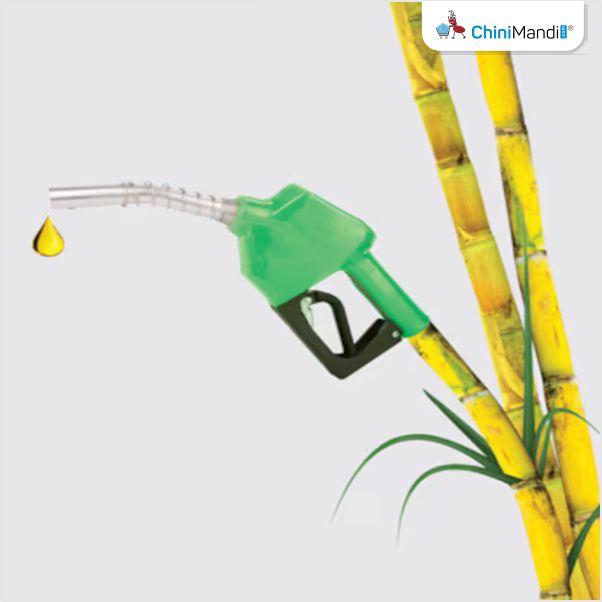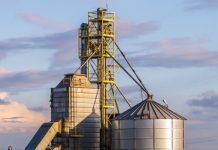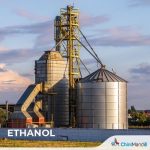- Furfural and Furfuryl Alcohol: Furfural, a natural dehydration product of xylose, is derived from agricultural wastes like corn cobs and sugarcane bagasse. It’s widely used as a solvent and in the production of various chemicals and pharmaceuticals. Furfuryl alcohol, a derivative of furfural, is primarily used as a solvent and resin in foundries and coatings industry. Both markets are driven by the increasing demand for sustainable and eco-friendly alternatives to petroleum-based products.
Furfural and Furfuryl Alcohol: Bio-based Platform Chemicals
Furfural and furfuryl alcohol are key bio-based platform chemicals derived from biomass, offering a sustainable alternative to petroleum-based resources. Furfural, a colorless liquid with a pungent odor, is typically sourced from hemicellulose in agricultural waste like corncobs or sugarcane bagasse. It serves various industries as solvents, in furan resin production for adhesives and composites, and in pharmaceuticals and fungicides.
Furfuryl alcohol, also colorless but potentially amber with age, has a faint burning odor and bitter taste. It is miscible with organic solvents but only slightly soluble in water. Furfuryl alcohol is used in resins and polymers, pharmaceuticals, agricultural chemicals, and as fuels or additives, often replacing formaldehyde due to lower toxicity. Both chemicals are pivotal in the biorefinery sector, offering versatile applications across industries.
- Chemical Properties of Furfural: The chemical name for furfural is Furan-2-carbaldehyde. In terms of the Lewis acid-base definition, furfural is a Lewis base as it has several non-bonding electron pairs at the two oxygen atoms. Freshly distilled furfural is colorless, but when exposed to the atmosphere for some time, it turns from yellow and brown to black.
- Furfuryl Alkyl Ethers (FAEs): FAEs are considered attractive biofuels or gasoline additives. Reductive etherification of bio-based furfural (FF) is a promising method for the production of these compounds.
- Discovery of Furfural: Furfural was discovered in the distillation products of various biomaterials by Döbereiner at the University of Jena (Germany) and John Stenhouse at Glasgow University. It did not become an industrial product until Quaker Oats (Chicago) began to produce it on a large scale from oat hulls.
- Furfural as a Platform Chemical: Furfural (C5H4O2) is an important platform chemical traditionally derived from the pentosans (i.e., C5 sugars) within lignocellulosic biomass. It is a promising renewable platform compound that can be further converted to biofuels and biochemicals. The highly functionalized molecular structure of furfural makes it a desired raw material for the sustainable production of value-added chemicals containing oxygen atoms.
- From Bagasse to Furfural: The journey of furfural begins with a waste product being given a new life. Bagasse, rich in hemicelluloses, undergoes a process called acid hydrolysis. Here, a diluted acid solution breaks down the hemicelluloses into simpler sugars, primarily xylose. This xylose then undergoes dehydration to yield furfural. This approach is not limited to bagasse; various agricultural byproducts like corncobs, oat hulls, wheat bran, and even sawdust can serve as feedstock, showcasing the potential for waste utilization in chemical production.
- Production Process of Furfural: The production process of furfural involves several sequential steps. Firstly, agricultural residues like bagasse undergo initial processing, including crushing or milling to increase surface area. The prepared feedstock is then mixed with a diluted acid solution, typically sulfuric acid, to facilitate acid hydrolysis, breaking down hemicellulose into simpler sugars, primarily xylose. Following this, dehydration of the xylose solution occurs to yield furfural by removing water molecules, which can be achieved through heating or catalyst-assisted methods. The furfural product is then separated and purified from the reaction mixture, often employing distillation techniques to meet quality standards. Finally, the purified furfural may undergo concentration for storage and transportation. Alternative feedstocks like corncobs, oat hulls, wheat bran, and sawdust offer flexibility, and ongoing research aims to develop more sustainable production methods by exploring milder acids and innovative catalyst systems to minimize environmental impact. Furfural purification by liquid-liquid extraction (LLE) produced a higher furfural yield compared to other methods. The solvent must have a high solute capability to achieve the LLE process with the highest furfural yield.
Furfural is primarily produced through the acid hydrolysis of hemicellulose. Furfuryl alcohol is then manufactured industrially by hydrogenating furfural, making it a derivative. Research is ongoing for even more efficient and environmentally friendly production methods, such as one-pot systems converting xylose (a sugar component of biomass) directly to furfuryl alcohol.
Comparison of furfural and furfuryl alcohol:
Furfural and furfuryl alcohol, while both valuable bio-based chemicals, have distinct properties. Furfural is immiscible in water but soluble in common organic solvents, while furfuryl alcohol has slightly limited water solubility and better miscibility with organic solvents. Notably, furfural has a pungent odor compared to the faint burning scent of furfuryl alcohol. In terms of applications, furfural finds use as a solvent and in resin production, while furfuryl alcohol is more suited for resins, fuels, and pharmaceuticals due to its lower toxicity.
- Applications of Furfural: Furfural derived from agricultural waste, boasts a multitude of applications across various industries. It serves as a solvent in resin, plastic, and varnish production, while also acting as a crucial chemical intermediate. Furfural derivatives contribute to pharmaceuticals, agrochemicals, antibiotics, antiviral drugs, and pesticides. In the flavor and fragrance sector, it enhances aroma and taste profiles. Furfural-based compounds find utility in lubricants, fuels, and as foundry sand binders for metal casting. Researchers explore furfural for developing biodegradable polymers and wood preservatives, extending its application to packaging and wood preservation. Additionally, furfural enhances the performance of electrolyte capacitors crucial in electronic devices. Its production aligns with green chemistry principles, utilizing renewable resources and minimizing waste. As scientists delve into novel applications, furfural remains an exciting area of research due to its unique properties and versatile potential.
- Agriculture and Everyday Products: Furfural plays a role in the production of fungicides and nematicides, crucial tools for protecting crops. It even finds its way into everyday products like plastics, inks, and certain flavoring compounds.
- Furfural in Pharmaceuticals: Furfural, a versatile compound derived from biomass, serves as a fundamental component in the production of various pharmaceuticals. Specific examples include Cyclopentanone (CPO), derived from furfural, which finds applications in pharmaceuticals, rubber chemicals, fungicides, and flavor and fragrance chemicals. Additionally, furfural can be oxidized to produce Maleic Acid, utilized in polymer manufacturing and pharmaceuticals as an intermediate compound. Another derivative, Furoic Acid (FuA), essential for organic synthesis and found in medicines and perfumes, is produced via the Cannizzaro reaction of furfural. These examples highlight furfural’s crucial role in pharmaceutical development and its diverse applications across industries.
- A Boon for the Sugar Industry: For the sugar industry, furfural production offers a significant benefit – value addition. By utilizing bagasse, a byproduct often considered waste, furfural production creates a new revenue stream. This not only enhances profitability but also promotes sustainability by finding a valuable use for what would otherwise be discarded.
- Economic Viability: Furfural production’s economic viability hinges on factors like plant size and technological advancements, with potential investments and payback periods varying. For instance, an integrated plant might require around 14 million euros with a payback period of roughly 5 years. However, detailed feasibility studies are crucial for accurate cost estimations. Challenges in large-scale production include ensuring consistent raw material supply, optimizing process efficiency, maintaining ideal reaction conditions, managing byproducts and impurities, addressing corrosion and equipment durability issues, mitigating environmental impact, navigating scale-up challenges, adapting to market demand and price fluctuations, complying with regulations, and fostering research and innovation to enhance processes and discover new applications.
- A Growing Market: The global market for furfural is on an upward trajectory, projected to reach a size of 11,418.95 crores by 2029. This growth is fueled by the increasing demand for sustainable and bio-based alternatives across various industries. With its diverse applications and eco-friendly nature, furfural is well-positioned to capitalize on this growing market trend.
- Technology Readiness: The technology readiness level (TRL) for furfural production from bagasse stands at TRL 8-9, indicating well-established technology with commercial production facilities globally. However, for other agricultural residues like corncobs, the TRL is around 7, reflecting ongoing optimization efforts. Looking ahead, technology for utilizing diverse agricultural residues is expected to reach TRL 8 within the next 5 years, enabling wider feedstock options. In India, the furfural manufacturing industry heavily relies on foreign technology, with limited success in developing indigenous processes. Efforts towards research
Sure, let’s continue with the topic of Furfural and Furfuryl Alcohol.
- Global Impact and Sustainability: The production of furfural and furfuryl alcohol has a global impact, contributing to the reduction of greenhouse gas emissions by replacing petroleum-based products with bio-based alternatives. The use of agricultural waste as feedstock promotes circular economy principles, turning waste into valuable products and reducing landfill waste. Moreover, the production process can be powered by renewable energy sources, further reducing the carbon footprint.
- Research and Development: There is ongoing research to improve the production process of furfural and furfuryl alcohol, focusing on increasing yield, reducing production cost, and minimizing environmental impact. Researchers are exploring the use of novel catalysts, alternative feedstocks, and advanced extraction and purification techniques. There is also significant interest in developing new applications for these chemicals, particularly in the fields of bioplastics, biofuels, and green chemistry.
- Regulatory Considerations: The production and use of furfural and furfuryl alcohol are subject to various regulations, depending on the country and industry. These regulations may pertain to environmental protection, worker safety, product quality, and waste disposal. Compliance with these regulations is crucial for the sustainable operation of furfural and furfuryl alcohol production facilities.
- Challenges and Opportunities: Despite the promising prospects, the furfural and furfuryl alcohol industry faces several challenges. These include the variability of feedstock quality, the high cost of production, and the need for technological advancements. However, these challenges also present opportunities for innovation and growth. With the increasing demand for sustainable and bio-based products, the industry has significant potential for expansion and profitability.
In conclusion, furfural and furfuryl alcohol represent a promising avenue for the development of sustainable and bio-based industries. Through continued research, technological advancement, and sustainable practices, these chemicals can contribute significantly to a greener and more sustainable future.
Disclaimer: The views and opinions expressed in the article by Dilip Patil, Managing Director of Samarth SSK Ltd., are solely his own.












